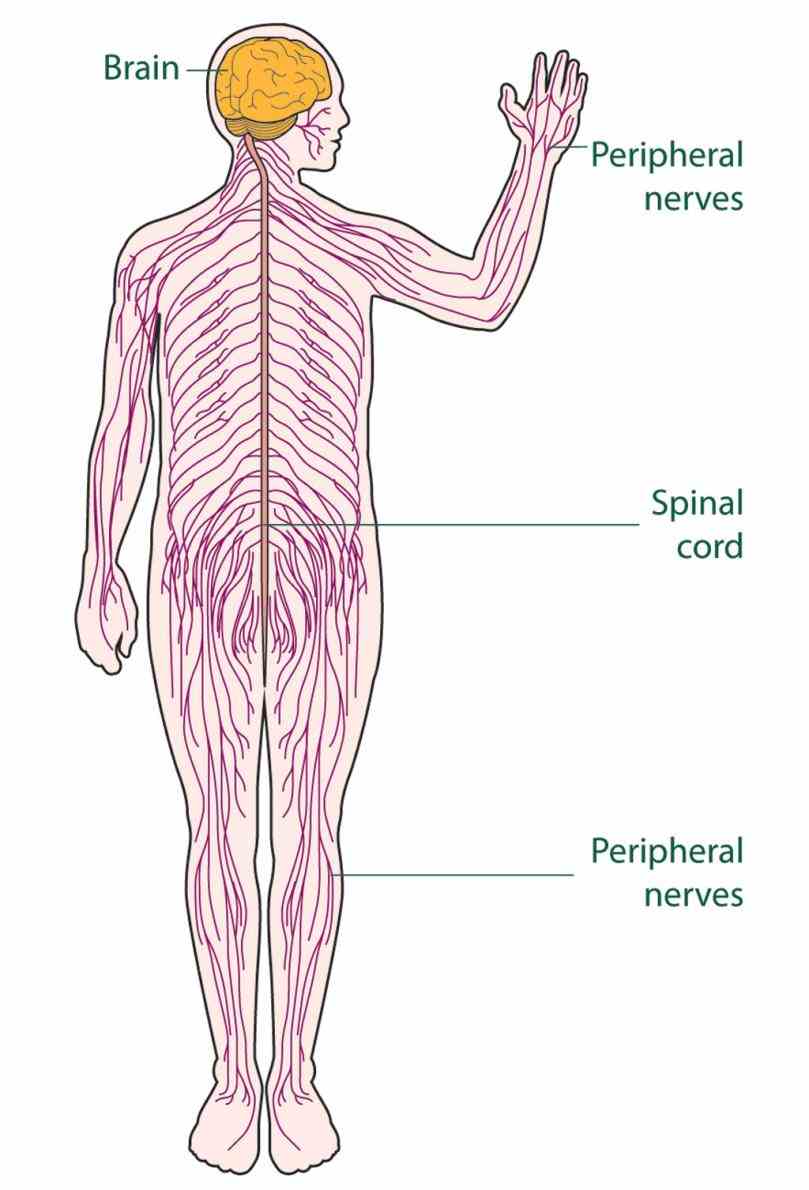Picture Of Nervus System : Pictures Of Central Nervous System / The nervous system is a complex network of neurons and cells that carry messages to and from the brain and spinal cord to various parts of the body.
Picture Of Nervus System : Pictures Of Central Nervous System / The nervous system is a complex network of neurons and cells that carry messages to and from the brain and spinal cord to various parts of the body.. Your nervous system is your body's command center. This system is associated with the control of body movements. More detail and supporting information is in the main article. All the sensations, actions, and emotions are made possible by the nervous system, which consists of the brain, spinal cord, nerves, and sensory. A neuron consists of a cell body called cyton, and two types of processes—dendrite and axon.
Nervous system with lymph nodes. Your nervous system controls everything from your heartbeat to your emotions. It processes this information and causes reactions in other parts of the body. The nervous system is a complex collection of nerves and specialized cells known as neurons that transmit signals between different parts of the body. Central nervous system the central nervous system (cns) consists of the spinal cord and the brain.
It gathers information from all over the body and coordinates activity.
However, these parts are usually indistinguishable. Your nervous system is your body's command center. It directs your movements, thoughts, actions, breathing, digestion, and more. Central nervous system the central nervous system (cns) consists of the spinal cord and the brain. The nervous system is a complex network of neurons and cells that carry messages to and from the brain and spinal cord to various parts of the body. The sympathetic nervous system and parasympathetic nervous system fall under the autonomic nervous system. The nervous system is a network of specialized cells that communicate information about an organism's surroundings and itself. Nervous system with lymph nodes. It gathers information from all over the body and coordinates activity. Alzheimer's disease, amyotrophic lateral sclerosis, aphasia, arteriovenous malformation, brain. Automatic motor reflex, nervous system, visceral nervous system, involuntary nervous system, peripheral nervous system control system below the level of consciousness to control visceral functions. A voluntary action is something that takes conscious thought, like when you. Here are some key points about the central nervous system.
The nervous system is a complex network of neurons and cells that carry messages to and from the brain and spinal cord to various parts of the body. See where the different parts are and what they do with this webmd your nervous system works both on autopilot and with you in control. Functionally, the nervous system has two main subdivisions: Nervous system with lymph nodes. They help in conducting the incoming sensory information and also the outgoing information to the muscle cells.
/brain_spinal_cord-57fe96b15f9b5805c26d5072.jpg)
The cns consists of the brain and spinal.
The nervous system can be divided into anatomic and functional parts; It controls the involuntary responses of the body when a person is in some serious situation. Nervous system with lymph nodes. Sensory input is when the body gathers information or data, by way of neurons, glia and synapses. It processes this information and causes reactions in other parts of the body. The nervous system can be divided into several connected systems that function together. The somatic, or voluntary, component; Cranial nerves—peripheral nerves originating at the brain. The cell body is located in either the brain or spinal cord and projects directly to a skeletal muscle. Human nervous system, system that conducts stimuli from sensory receptors to the brain and spinal cord and conducts impulses back to other body parts. Excitatory neurotransmitters encourage the transmission of an action potential, while inhibitory neurotransmitters system: The neurons conduct impulses and the neuroglia support and protect the neurons. Two types of cells constitute the nervous system— neurons and neuroglia.
However, these parts are usually indistinguishable. The nervous system is a complex network of neurons and cells that carry messages to and from the brain and spinal cord to various parts of the body. Functionally, the nervous system has two main subdivisions: The central nervous system is made up of the brain and spinal cord. Spinal nerves—one of 31 pairs of nerves that originate on the spinal cord from anterior and posterior roots.

Central and peripheral nervous system diagram pictures to pin on.
The nervous system is a network of specialized cells that communicate information about an organism's surroundings and itself. The cns consists of the brain and spinal. Your nervous system is your body's command center. They carry information or impulses as electrical signals from one place to another in the body. They receive data and feedback from the sensory organs and from. The nervous system is a complex collection of nerves and specialized cells known as neurons that transmit signals between different parts of the body. Sensory input is when the body gathers information or data, by way of neurons, glia and synapses. Central and peripheral nervous system diagram pictures to pin on. The nervous system has three main functions: Together, the central nervous system (cns) and the peripheral nervous systems (pns) transmit and process sensory information and coordinate bodily functions. Sensory input, integration of data and motor output. The nervous system is made up of the central nervous system and the peripheral nervous system it consists of the cerebrum — the area with all the folds and grooves typically seen in pictures of the brain — as well as some other structures under it. And the autonomic, or involuntary, component.

Komentar
Posting Komentar